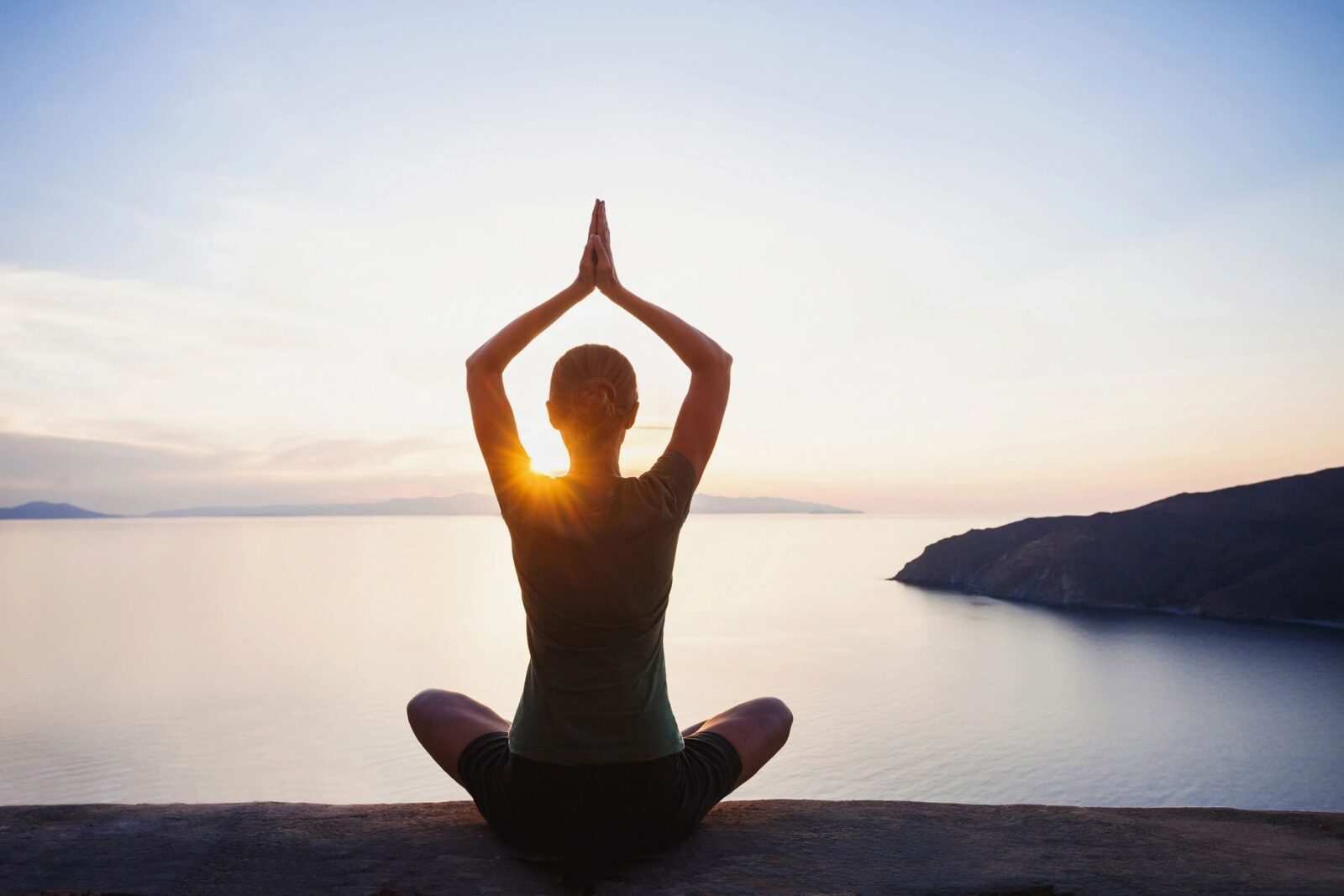The article originally posted on Elephant Journal on 9/16/2020
Read here

Five years ago, was the first time I stepped into a yoga studio. I knew from all the hype it was supposed to be good for me; it was supposed to increase my flexibility and strength, improve concentration, release emotions, decrease anxiety, and promote deeper sleep.
After following a trusted friend on a recommendation, I gave it a whirl on a Groupon special. Within one week of taking multiple classes, I was hooked.
There was a heartfelt sense of peace I had never experienced from engaging in this type of exercise. I’d been a runner and avid gym-goer for over 20 years, but my body hurt from the continuous pounding of the pavement and I was no longer feeling happy or fulfilled from the runs.
Perhaps I was secretly and unconsciously running away from something or myself.
As many fellow yogis can attest, yoga facilitates another path to tap into the higher self, to connect with the divine, and to nurture the heart and soul. I discovered the hotter the temperature in the room, the more I felt an immense amount of peace, self-love, willingness to be of service, and grounded, yet euphoric.
Each time we meet ourselves on the yoga mat, the experience is dynamic and empowering. Learning to honor our body and what it needs, at that point in time and space—from breath work to shared energy with our fellow yogis—is an ultimate form of self-care.
While I made vast improvements in balance, strength, and flexibility, yoga also allowed me to be present and extend my capability to receive. At the same time, yoga added benefit in a profound way: my thinking stretched to lengths I had never imagined, like the gadget that pulls the salt-water taffy at the State Fair.
When I was a kid, I was mesmerized watching the scene—the ease and seemingly effortless motion of the taffy being pulled and stretched. With this analogy in mind (no pun intended), once stretched to a new length with increased capacity, it’s impossible to revert to old thinking unless we wish to remain stagnant.
Carol Dweck is a researcher who came up with the concept of fixed mindset versus growth mindset. She explains how the two impact behaviors and performance.
“In a fixed mindset, students believe their basic abilities, their intelligence, their talents, are just fixed traits. They have a certain amount and that’s that, and then their goal becomes to look smart all the time and never look dumb. In a growth mindset, students understand that their talents and abilities can be developed through effort, good teaching, and persistence. They don’t necessarily think everyone’s the same or anyone can be Einstein, but they believe everyone can get smarter if they work at it.” ~ Carol Dweck
A fixed mindset basically translates as “ability is static.” It can appear as feet stuck in concrete with no forward movement; a rigid approach. An individual will avoid challenges or not take chances due to possible failure, give up easily, view any given effort as fruitless, ignore useful criticism, and will likely be threatened by others. These traits will greatly limit an individual from unleashing their potential and enjoying the journey in life. The focus is on winning or the destination.

“The pessimist sees difficulty in every opportunity. The optimist sees opportunity in every difficulty.” ~ Winston Churchill
With a growth mindset, the ability is developed or dynamic—ever-changing. Individuals exhibiting a growth mindset embrace challenges, persist in obstacles, view efforts as necessary, learn from criticism, and are inspired by others’ success. The expression of “turning lemons into lemonade” 100 percent applies to a growth mindset. The person with a growth mindset will take the setback or the undesirable outcome and apply a new formula to find a favorable outcome. Growth-minded people love to see other people win and succeed, and are inspired to plant their own seeds. When life knocks us down, growth-minded individuals search for the fire in the belly to push forward and learn from the mistakes. It’s part of the journey of living life to the fullest, enjoying the journey as it unfolds.
“Our greatest weakness lies in giving up. The most certain way to succeed is to try just one more time.” ~ Thomas Edison
Growing from childhood into early adulthood (pre-yoga), I’ll sheepishly admit I lived with a fixed mindset. I was afraid to take chances, to make decisions alone, and often felt jealous of other people’s success. Hot yoga was a force to allow me to let go of limiting beliefs, rid my body of old trauma, release emotions, and spiritually surrender to the potential that there was a new version of me up around the corner if I was willing to tread toward a growth mindset. With any new change in habit, it takes time to grow and solidify lasting effects.
Yoga teaches us to let go of what no longer serves us.
Over the years, I ended up dumping a toxic wasteland of junk, which could not remain attached to me if I wanted to thrive. And it happened by default by showing up with presence, intention, and regularity to my yoga practice.
A growth mindset allows us to shift, in how we perceive others and ourselves, with the ability to view ourselves from the outside, looking in.
It becomes easier to see where adjustments or tweaks need to occur in life.
It provides for increased freedom and latitude with the choices we make and the chances we take.
Even with five years of yoga under my belt, I still can’t stretch far enough to touch my toes, but I do know I can reach for the sky.

© 2020 by Jodi Lawyer, M.A., OTR/L. Helix Healing Path. All rights reserved. You may quote, copy, translate and link to this article in its entirety, on free, non-donation based websites only, as long as you include the author name and a working link back to this website. All other uses are strictly prohibited.

